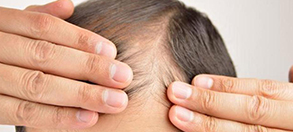Dr. Everts, among your publications, you recently had a peer-reviewed manuscript titled, “Dietary vitamin A regulates wingless-related MMTV integration site signaling to alter the hair cycle.” Can you tell us in a simple manner, and 1-2 sentences, what the take away would be for an average person with hair thinning or hair loss issues?
In our previous study, we found that consuming high vitamin A induced the growth phase of the hair cycle and accelerated the onset of alopecia areata in mice. The current study explores the mechanism of this effect and showed that dietary vitamin A increased one of the major signaling pathways required for the induction of the hair follicle growth phase (WNT signaling).
Do you think vitamin D testing or Vitamin D supplements should be incorporated in the clinical management of hair loss?
Both vitamin A and D levels should be tested in the clinic. Supplements should only be given to treat a deficiency of these vitamins, as they are both fat soluble and can be toxic. In my previous study in mice, I found that as little as 3 times the recommended level of vitamin A worsened alopecia areata. Three times the RDA in humans has been shown to also reduce bone mineral density. Therefore I do not support supplementation with vitamin A in people with normal blood levels. The best level of vitamin D is still being debated by the experts.
Do you think this study will play a role in other types of hair loss ?
Yes. Different forms of hair loss occur during different stages of the hair cycle and may be altered differently by dietary vitamin A. We found that high dietary vitamin worsened cicatricial alopecia in a different study in mice. In mouse models of both cicatricial alopecia and alopecia areata the hair follicle is more susceptible to disease when it is in the growth phase of the hair cycle, which may be part of the reason why the high vitamin A worsened these diseases. But in other diseases hair follicles in the resting phase of the hair follicle are more susceptible to disease. These diseases include telogen effluvium, female, and male pattern hair loss. Future studies are needed to determine how vitamin A would impact these diseases.
What do you see as the most promising development in hair loss research in the next 5 years that will have a practical/clinical application?
Dr. Christiano’s group recently found a new class of drugs that reverses alopecia areata in mice and a few humans. These drugs block the immune system’s attack of the hair follicle. While these drugs have numerous side effects and additional studies are needed, I believe that with time these drugs or a modified form of them will be used in the clinic.
Read more hair expert interviews.


